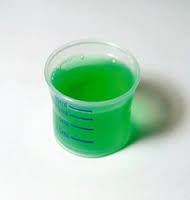Is Methadone Maintenance Safe for Me?
First developed in the mid-1960s, methadone maintenance treatment has undergone extensive research and development since its inception. As methadone maintenance programs fall under federal regulation, practitioners must follow standard guidelines when administering this drug.
Not surprisingly, the effects of opiate addiction affect different people in different ways. Likewise, not everyone will respond to methadone maintenance treatment in the same way. In cases where a person opts to take methadone on his or her own terms, certain risks must be considered before starting a methadone maintenance regimen. As with any other treatment drug, some people may also experience certain side effects when taking methadone.
Methadone Maintenance Programs
Methadone’s ability to reduce drug cravings and withdrawal effects without producing a “high” effect makes for a unique treatment approach for combating opiate addictions. Though methadone is commonly used as a treatment for opiate addiction, methadone itself is also an opiate-based drug. As opiates in general carry a high potential for abuse and addiction, all opiate-type drugs qualify as Schedule II narcotics.
Schedule II narcotics fall under government regulation as a means for tracking and monitoring who uses, distributes and dispenses these drugs. As a treatment modality, methadone maintenance must also follow certain government-mandated guidelines when used to treat opiate addictions, according to the Substance Abuse & Mental Health Services Administration.

Methadone is a great treatment for opiate addiction!
After years of use within the addictions field, studies examining the long-term use of methadone confirm the drug as a safe and effective treatment approach, according to the National Institute on Drug Abuse International Program. Safe, effective methadone dosage amounts range anywhere between 80 to 120 milligrams per day depending on the severity of a person’s addiction. At these levels, methadone maintenance treatment can run for as long as 14 years without producing any known health risks.
Methadone Abuse Risks
As an opiate-based medication, people who abuse methadone when receiving methadone maintenance treatment place themselves at considerable risk, according to the National Drug Intelligence Center. Just like with any other opiate drug, methadone abuse can quickly raise a person’s tolerance levels for the drug, which becomes the spark that sets off addiction.
In some instances, recovering addicts who’ve relapsed may combine methadone doses with other opiate drugs as a way to intensify a “high.” This practice greatly increases the likelihood of overdose as methadone is specifically designed not to produce a “high” effect. Consequently, a person’s respiratory system can completely shutdown to the point where coma and even death can result.
Methadone Side Effects
In spite of methadone’s safety profile, this drug does cause certain side effects for some people. The types of sides effects most often experienced include –
- Problems sleeping
- Constipation
- Sweating
- Water retention
- Skin rashes
- Weight gain
- Sexual dysfunction
Besides abusing methadone doses, the only other safety issue has to do with medication interactions. Medications known to react with methadone can affect how quickly (or slowly) the body metabolizes each methadone dose. Medications that interact with methadone include –
- Antibiotics
- Antidepressants
- Tranquilizers
- Cough syrups
- Antihistamines
To avoid medication interactions during methadone maintenance treatment, ensure the administering doctor is aware of any and all other medications a person is currently taking.